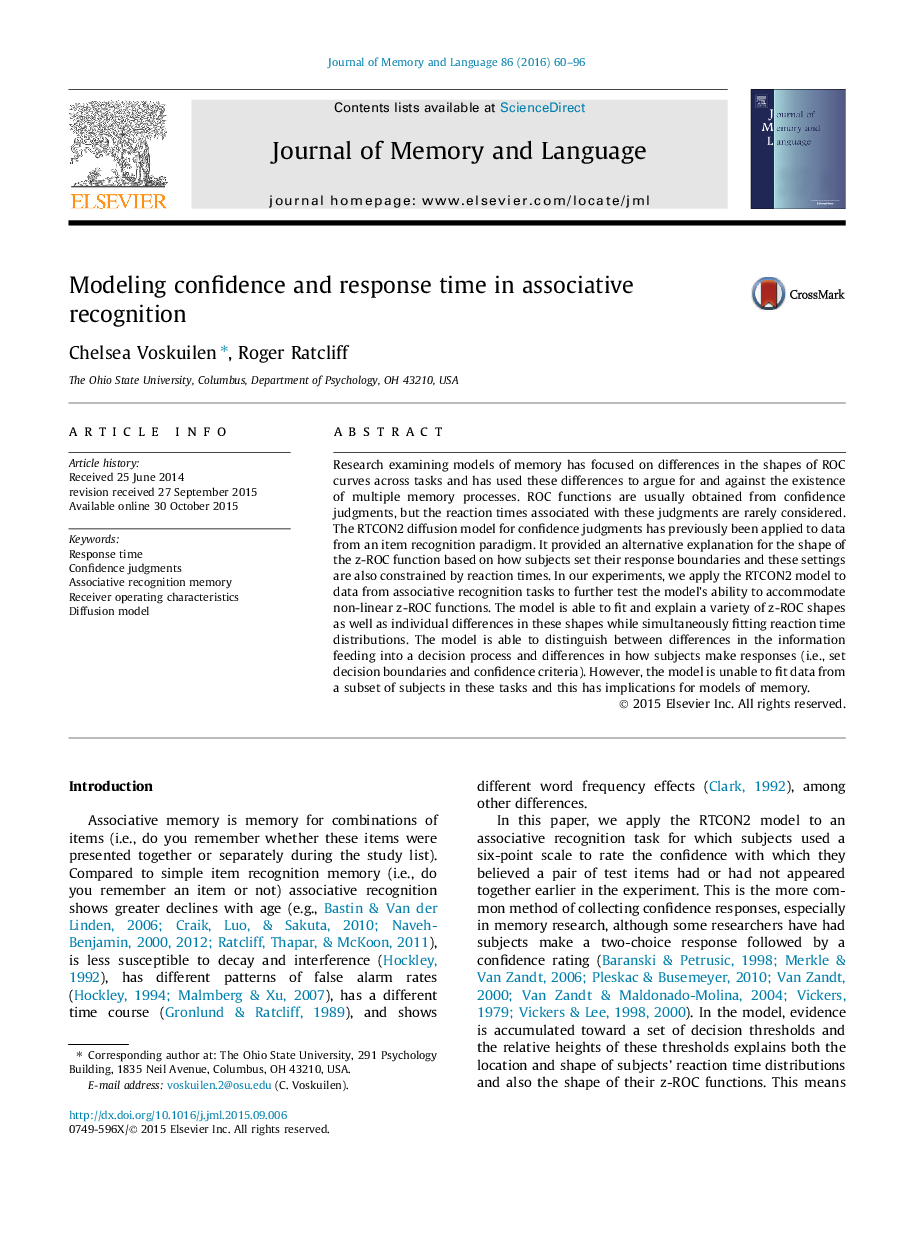| کد مقاله | کد نشریه | سال انتشار | مقاله انگلیسی | نسخه تمام متن |
|---|---|---|---|---|
| 931778 | 1474633 | 2016 | 37 صفحه PDF | دانلود رایگان |
• We fit RTCON2 model to associative recognition data (accuracy and reaction times).
• Subjects exhibited a variety of zROC function shapes (linear and non-linear).
• RTCON2 was able to fit most zROC shapes, but not some u-shaped zROCs.
• RTCON2 performed as well as standard diffusion model in a two-choice task.
• Further development of the model is needed to accommodate all zROC shapes.
Research examining models of memory has focused on differences in the shapes of ROC curves across tasks and has used these differences to argue for and against the existence of multiple memory processes. ROC functions are usually obtained from confidence judgments, but the reaction times associated with these judgments are rarely considered. The RTCON2 diffusion model for confidence judgments has previously been applied to data from an item recognition paradigm. It provided an alternative explanation for the shape of the z-ROC function based on how subjects set their response boundaries and these settings are also constrained by reaction times. In our experiments, we apply the RTCON2 model to data from associative recognition tasks to further test the model’s ability to accommodate non-linear z-ROC functions. The model is able to fit and explain a variety of z-ROC shapes as well as individual differences in these shapes while simultaneously fitting reaction time distributions. The model is able to distinguish between differences in the information feeding into a decision process and differences in how subjects make responses (i.e., set decision boundaries and confidence criteria). However, the model is unable to fit data from a subset of subjects in these tasks and this has implications for models of memory.
Journal: Journal of Memory and Language - Volume 86, January 2016, Pages 60–96
